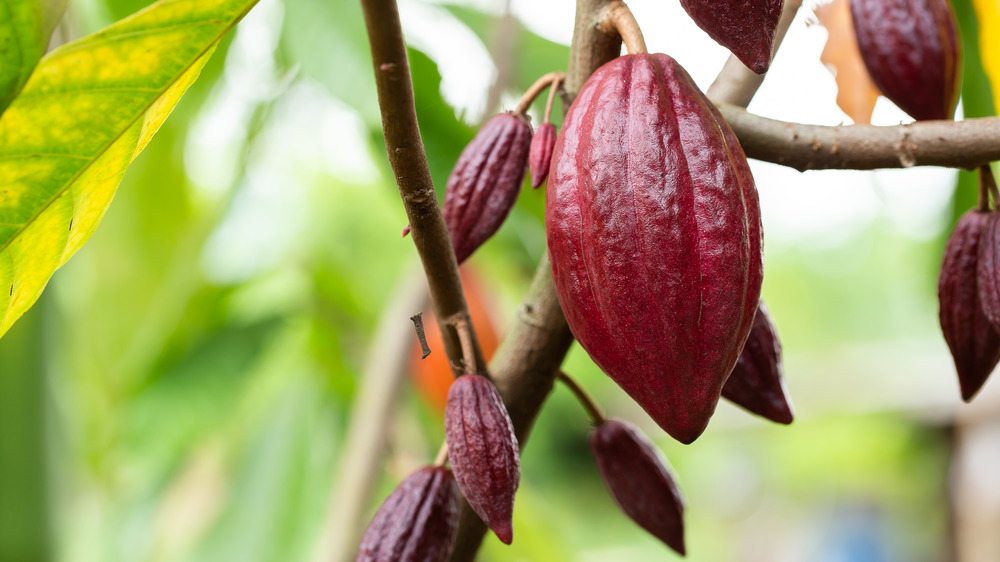The One Ingredient That Shouldn't Be In The Chocolate You're Eating
Ah, chocolate ... milk, dark, mint ... with coconut or almonds ... If you're a fan of chocolate in any form, you eat up findings that certain types of chocolate are considered healthy. For instance, dark chocolate contains up to three times more flavanols, plant chemicals that may help reduce your risk of heart disease, according to the Harvard T.H. Chan School of Public Health in Boston, Massachusetts (via HSPH).
But there's one ingredient to keep on your radar — and out of your chocolate, researchers say: cadmium (via Eat This, Not That!). Cadmium is a mineral found in the earth's crust, as well as rocks and volcanic soil. For humans, it's a toxic metal that can cause vomiting, diarrhea, and kidney disease, according to the Centers for Disease Control and Prevention. Scientists from the Food and Drug Administration (FDA) also have said that cadmium, arsenic, lead, and mercury affect children's neurological development (via the Environmental Defense Fund).
People can be exposed to cadmium by breathing cigarette smoke or working in a facility that manufactures batteries or involves metal soldering or welding. We also can ingest cadmium through foods grown in soil that contains cadmium. Much of the cacao trees that provide cacao beans for the world's chocolate supply grow in Latin America, where there are higher traces of this metal, according to a report in the Journal of Environmental Quality.
Zinc, iron, and calcium can protect against cadmium
It takes about 10 to 30 years for the human body to process cadmium, according to the Royal Society of Chemistry. In Europe, about 90 percent of nonsmokers exposed to cadmium absorbed it by eating potatoes, breads, bakery goods, chocolate products, and leafy vegetables (via Chemistry World). In 2019, the European Food Safety Commission decreased the safety thresholds for cadmium in processed chocolate to 0.8 mg per kilogram for dark chocolate and 0.1 mg per kilogram for chocolate "usually consumed by children," i.e., sweetened chocolate.
FDA scientists have noted that spinach, lettuce, potato chips, wheat cereal, and sunflower seeds have high concentrations of cadmium. In 2018, they tested a sampling of dark chocolate, milk chocolate, cocoa powder, and cocoa nib products purchased at retail and found cadmium levels ranging from 0.004 to 3.15 mg/kg. The higher cadmium concentrations were in products originating from Latin America (via the journal Food Additives & Contaminants: Part B).
Researchers from Ecuador and Belgium are examining how to reduce the amount of cadmium that ends up in cacao beans. Meanwhile, the FDA advises limiting cadmium intake and protecting against cadmium absorption by ingesting proper amounts of zinc, iron, and calcium. The FDA's general recommended daily values for adults are 11 mg of zinc, 18 mg of iron, and 1300 mg of calcium; these will vary for women and other age groups (via FDA).


